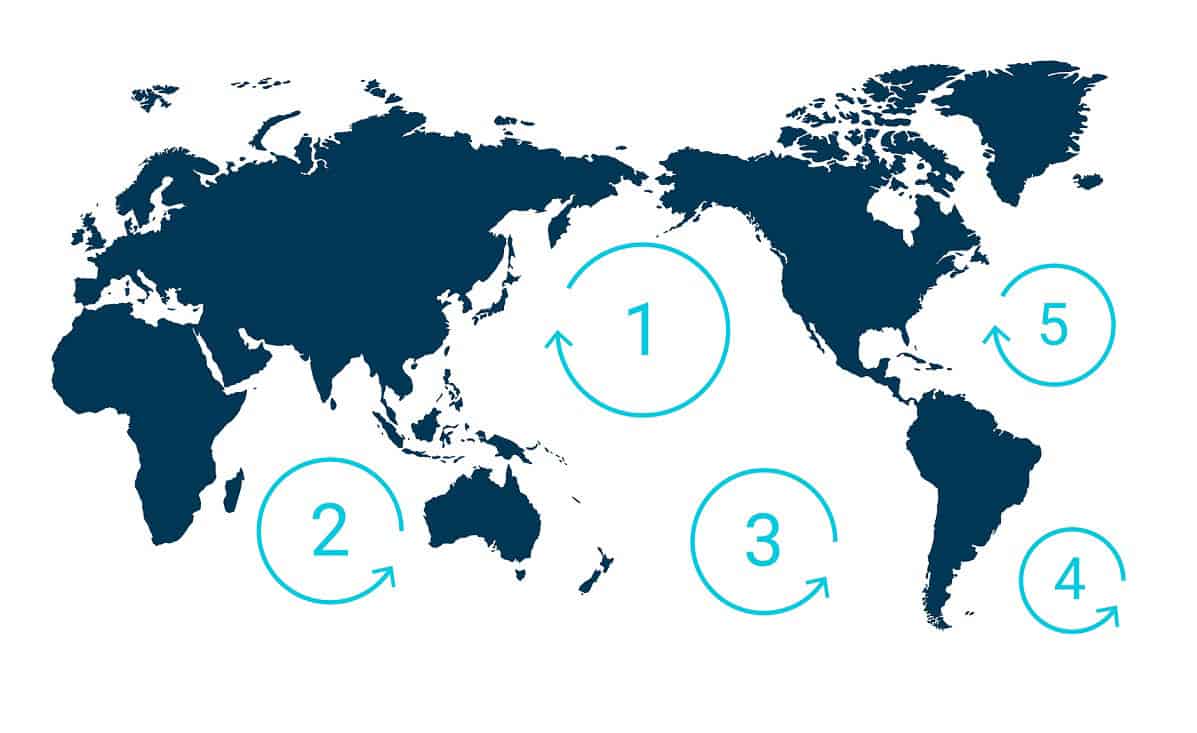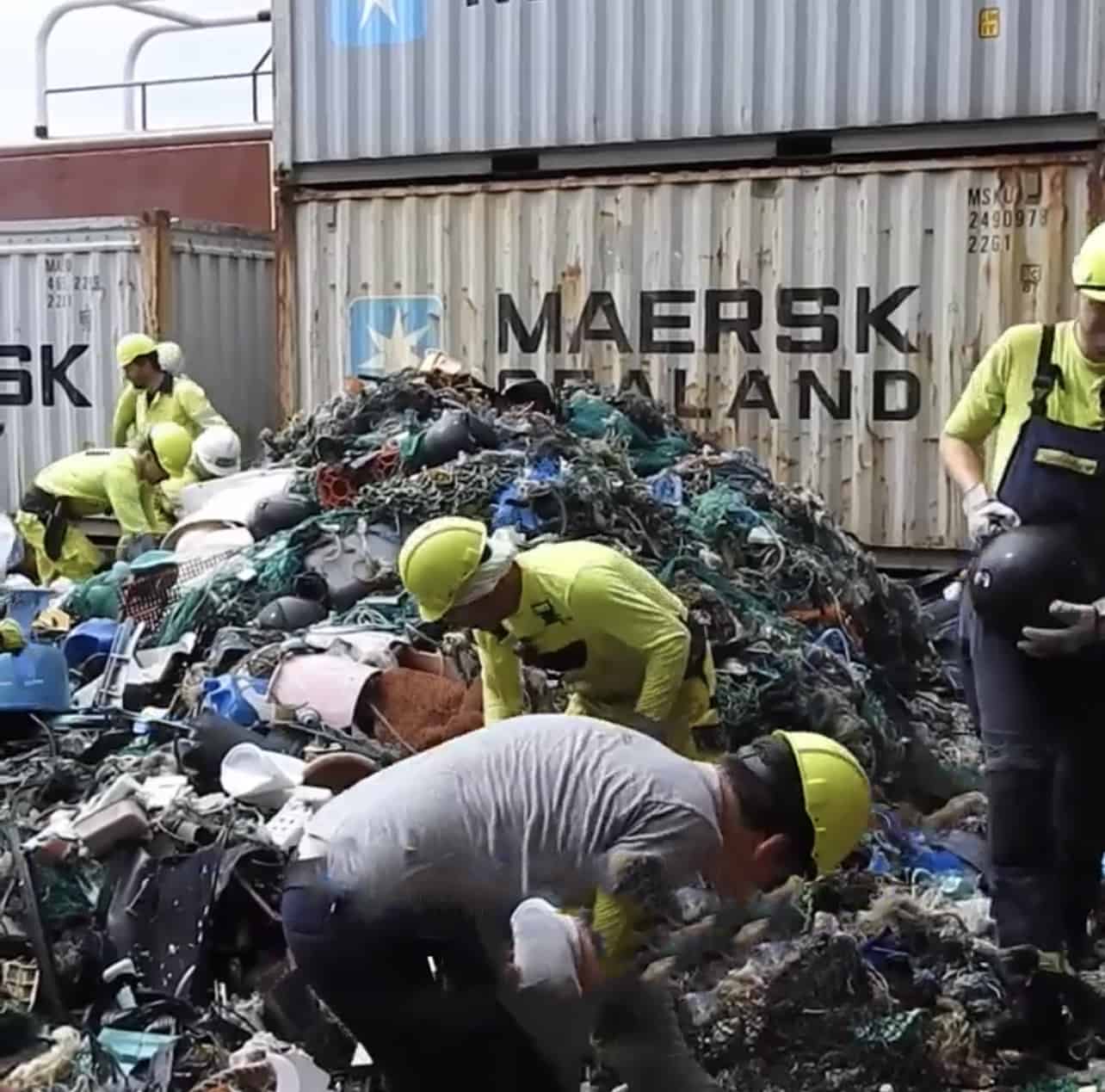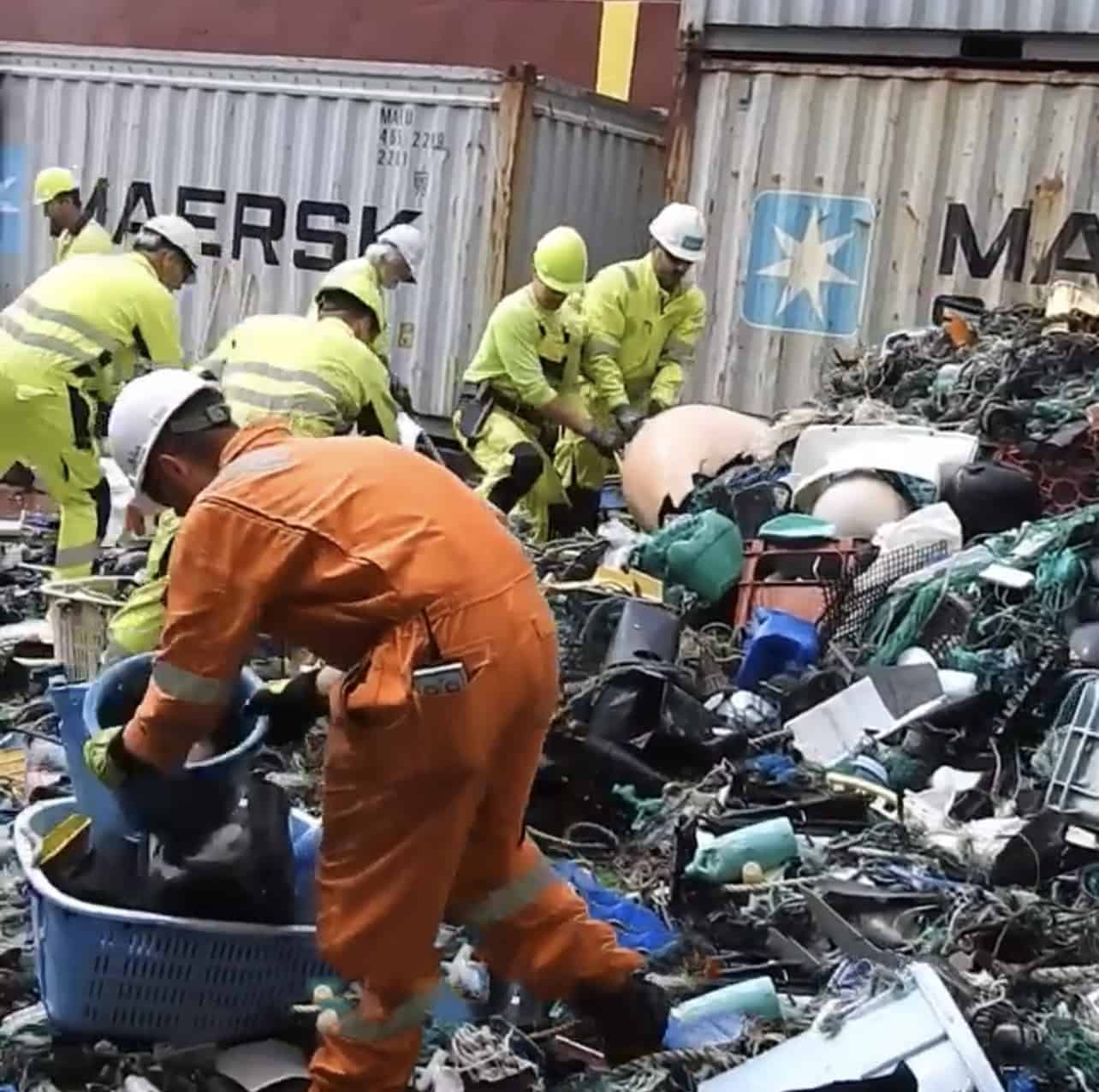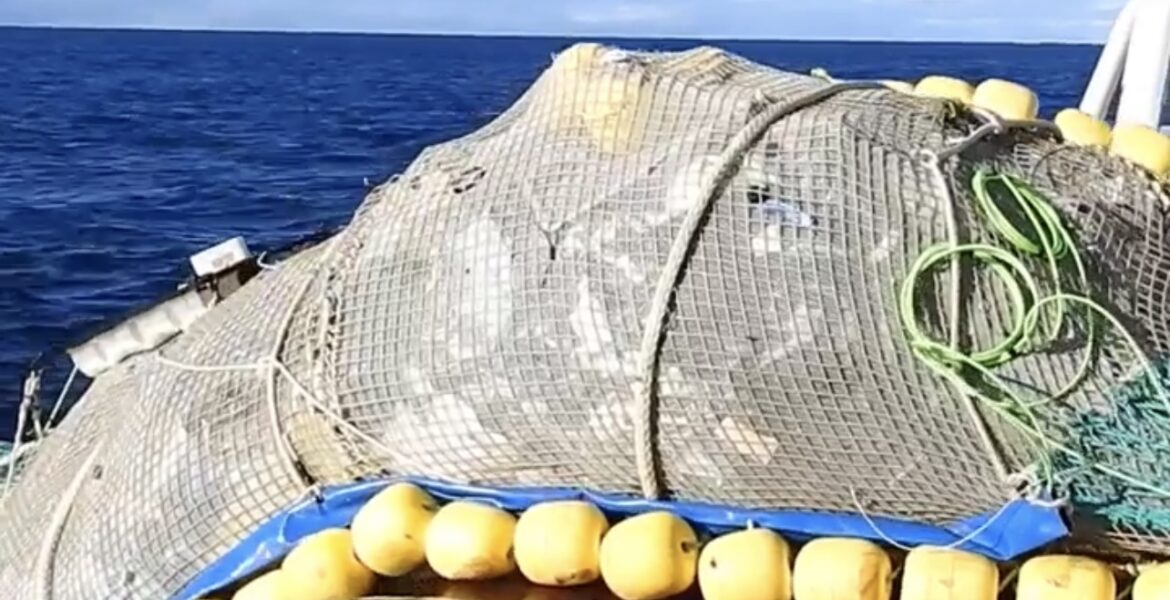Over 100,000 kilograms of plastic has been removed from the Great Pacific Garbage Patch (GPGP) in a record haul orchestrated by non-profit ‘The Ocean Cleanup.’
“More than 100,000kg of plastic removed from the Great Pacific Garbage Patch (GPGP),” The Ocean Cleanup announced.
“Thank you to our determined offshore crew and supporters worldwide; together, we have now officially cleaned up 1/1000th of the GPGP.”
The Ocean Cleanup designs and develops advanced technologies to rid the world’s oceans of plastic through ocean clean-up systems and river interception solutions.
The Ocean Cleanup is headed up by founder and CEO Boyan Slat, an inventor and entrepreneur who creates technologies to solve societal problems. He dropped out of his aerospace engineering study at TU Delft to work full-time on this ambitious project.
The organisation aims to remove 90% of floating ocean plastic by 2040 and works with individuals, corporations and governments worldwide towards a future where plastic no longer pollutes the Earth’s oceans.
The Ocean Cleanup is currently cleaning up plastic in the Great Pacific Garbage Patch, which is the largest of five offshore accumulation zones of ocean plastic in the world, located between Hawaii and California.

Every year, millions of tonnes of plastic enter the oceans, primarily spilling out from rivers. A portion of this plastic travels to ocean garbage patches, becoming caught in a vortex of circulating current.
The stronger, more buoyant plastics show resiliency in the marine environment, allowing them to be transported over extended distances. They persist on the ocean surface as they make their way out to sea.
The Great Pacific Garbage Patch covers an estimated surface area of 1.6 million square kilometres
The Great Pacific Garbage Patch (GPGP) covers an estimated surface area of 1.6 million square kilometres, an area twice the size of the United States state of Texas or three times the size of France.
It is estimated that the mass of the plastic in the Great Pacific Garbage Patch (GPGP), the mass of which is estimated to be approximately 80,000 tonnes, which is equivalent to the weight of 500 Jumbo Jets.
Approximately 1.8 trillion pieces of plastic are floating in the patch – equivalent to 250 pieces of plastic for every human in the world.
If no action is taken, the plastic will increasingly damage the Earth’s ecosystems, world health and the global economy.



“Our operation in the Pacific Ocean reached an exciting milestone: The Ocean Cleanup has now officially removed more than 100,000 kilograms of plastic from the Great Pacific Garbage Patch (GPGP),” says Slat.
“Since deployment in August 2021, System 002 (or “Jenny”) has now collected 101,353 kilograms of plastic over 45 extractions, sweeping an area of ocean of over 3000km2 – comparable to the size of Luxembourg or Rhode Island. Added to the 7,173 kilograms of plastic captured by our previous prototype systems, The Ocean Cleanup has now collected 108,526 kilograms of plastic from the GPGP – more than the combined weight of two and a half Boeing 737-800s, or the dry weight of a space shuttle!
If we repeat this 100,000 kilogram haul 1,000 times – the Great Pacific Garbage Patch will be gone.
“According to our 2018 study in which we mapped the patch, the total amount of accumulated plastic is 79,000,000 kilograms, or 100,000,000 kilograms if we include the Outer GPGP.
“Thus, if we repeat this 100,000 kilogram haul 1,000 times – the Great Pacific Garbage Patch will be gone.”
View this post on Instagram
Read also Elon Musk's Space Junk

